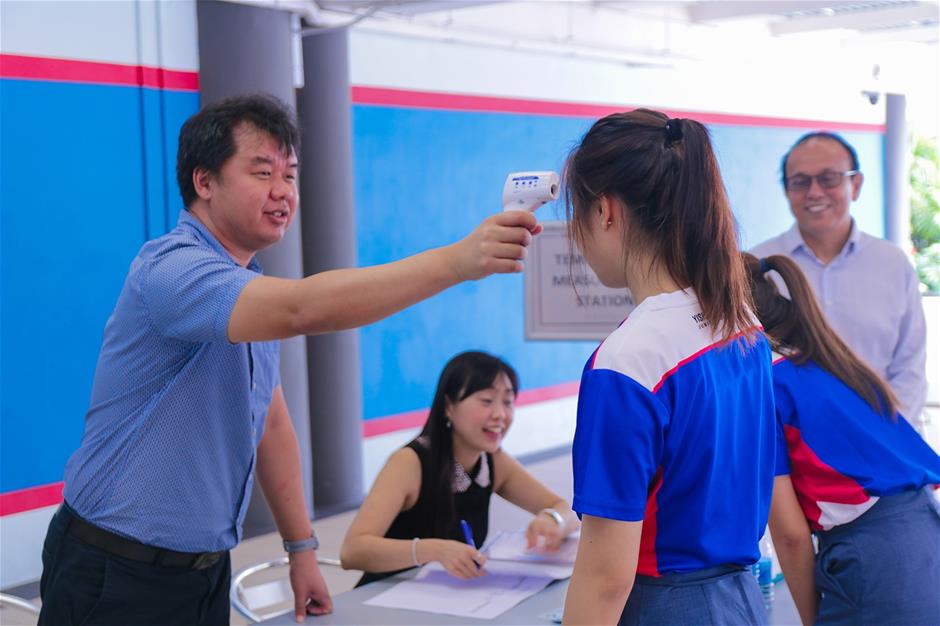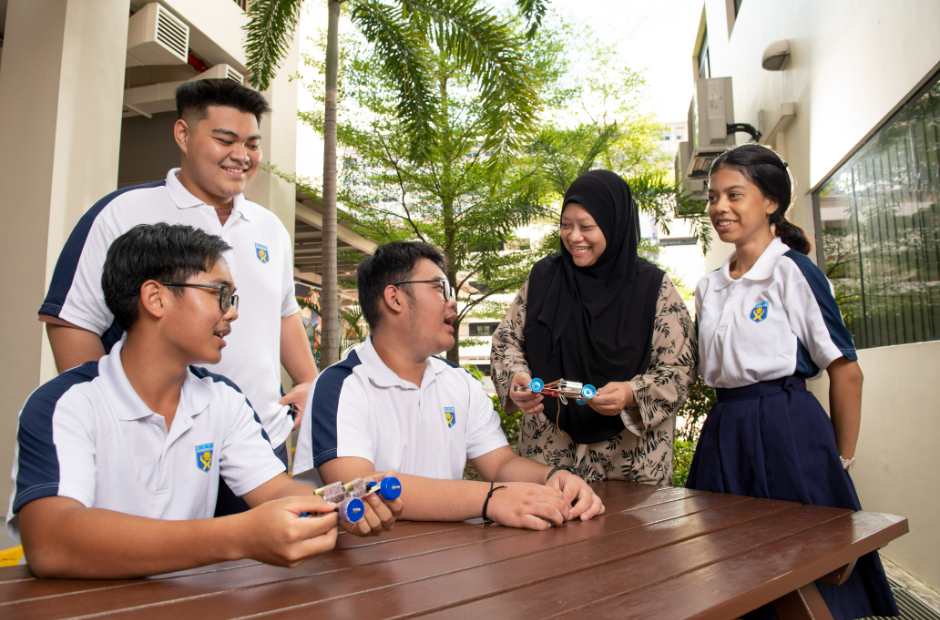Q: As a principal, how are you handling the COVID-19 crisis?
As a leader of a school I know that learning must continue; and at that same time, I must protect the safety and well-being of my students. We have to be alert and ready.
Q: You had prior experience handling another medical crisis in schools – the SARS outbreak, back in 2003. Can you tell me what you did then?
I was working at the MOE headquarters then, and temperature-taking for students was not a procedure that was established in schools yet. We were not even sure if the Primary 1 or Primary 2 students knew how to put thermometers in their mouths properly, so we bought fever strips that could be placed on their foreheads.
SARS was the first time we had to deal with a medical crisis, so we had to use our creativity to build capabilities. I was asked to create a temperature-taking protocol for students in classrooms.
So I tapped on my National Service (NS) experience and decided to structure it around the framework of a drill. In NS, you have a drill where you assemble and strip a rifle part by part. You have to do this drill in a very prescribed way, so I applied this to the temperature-taking exercise.
We had students stand up in pairs, first. Then, they would hold the thermometer in their right hand while using their left hand to hold a piece of tissue. Part of that drill was about showing your buddy your body temperature. If your buddy checked that your temperature was normal, you could sit down, otherwise you had to remain standing.
We also established temperature-taking stations.

Q: How is dealing with the COVID-19 outbreak different from SARS?
Since then, we have established a Standard Operating Procedure (SOP). We conduct exercises to ensure that we have the capabilities and the necessary equipment ready.
We have grown all those capabilities since SARS, be it temperature taking, isolation, and ensuring that students who were not well, stayed at home. So we were more prepared this time round.
Q: How has your school adapted lessons so that the curriculum continues with minimal disruption?
Today, technology has enabled us to carry out lessons outside the classroom. There’s online learning, there’s SLS. And our teachers are well-equipped to make online learning engaging for students. We are more confident about being able to ensure learning continues than compared to the past (during SARS).
But beyond that, we have to continue to ensure that our schools remain the safest place for students to learn. Our schools have the health and safety of their students at the top of their minds. It’s about being creative about lesson planning so that learning carries on while at the same time not compromising matters related to health.
Q: How are your students handling the situation? How do they feel?
I would say that they take it in their stride. I think students generally do understand things. Especially at the Junior College (JC) level, when you are talking to 17 and 18 year olds. I think it is good for us to make sure that the students are on board, and they understand the reasons behind the precautionary measures that we have implemented.
How we help them to better understand the situation is by teaching them to see things in multiple perspectives. They understand that, because of these new health imperatives, they need to be agile as they look at the situation and decide how to move forward.
Q: How do you assure parents who are worried?
The health and safety of our students are at the top of all our considerations.
It may well be that schools are one of the safest places during a health crisis. There are a lot of regimes and protocols in place; we keep an eye on the health of our students almost constantly. We will also modify programmes and ensure that learning continues.
Watch Mr De Silva’s video here.





.jpg)
